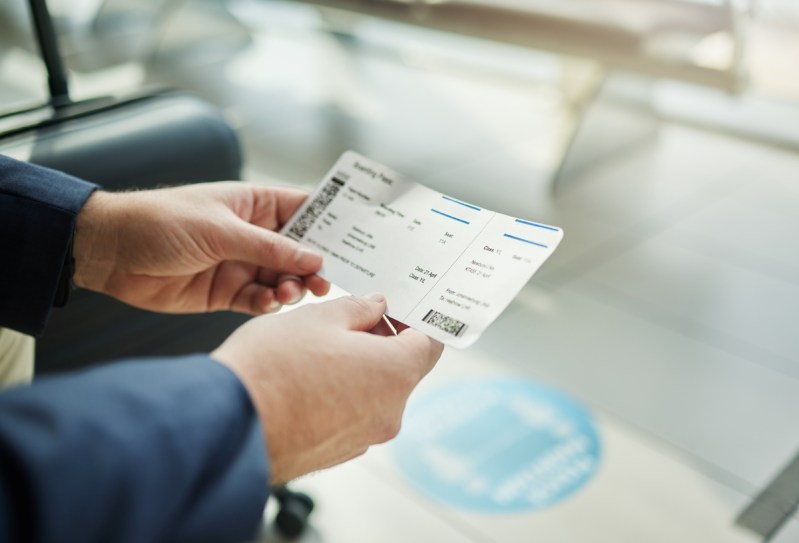
In an era where travel knows no bounds, the desire to explore new destinations often collides with the constraints of a budget. However, finding the cheapest flights isn’t always the hardest thing to do. The realm of air travel is filled with opportunities to discover the world without breaking the bank. With a few practical tips and tricks, you can ensure that your next journey is not only memorable but also budget-friendly.

The dynamics of finding the cheapest flights
Before embarking on the journey to find the cheapest flights, you must first understand the intricate dynamics of the airline industry. Flight prices often fluctuate from week to week or even from day to day. A myriad of factors influence this, including the day of the week you are flying, time of booking, seasonality, and airline competition. Understanding and recognizing these variables is crucial for devising an effective strategy to navigate the complex world of booking air travel.

How to find the cheapest flights
So, how do you find the cheapest flights? Although the price of tickets is often out of your control, there are a few steps you can take to keep the price of your plane tickets to a minimum. Finding cheap flights involves a delicate balance between flexibility, timing, and research. Whether you’re a seasoned traveler or a first-time flyer, implementing these tips will undoubtedly enhance your ability to find and book the most cost-effective flights for your journey.
Be flexible with your dates and times
Flexibility is key when it comes to securing affordable airfare. When searching for the cheapest flights, be open to adjusting your travel dates and times. Mid-week flights and red-eye options are often more budget-friendly than weekend or peak-hour departures. You can utilize flexible date search options on the airline’s website to identify the cheapest days and times to travel.
Set price alerts
Take advantage of technology by setting price alerts for your desired routes. Numerous online travel agencies and websites such as Google Flights allow users to receive notifications when flight prices drop. This proactive approach ensures that you are promptly informed of any opportunities to grab the cheapest flights before they’re gone.
Sign up for airline loyalty programs
Frequent flyers can tap into the power of airline miles and loyalty programs to secure discounts (or even free flights at times). You can accumulate miles through credit card rewards, airline partnerships, and loyalty points. These miles can significantly reduce the cost of air travel, making it an attractive option for those trying to book a flight on a budget.
Check out budget airlines
Don’t shy away from budget airlines. These airlines often provide significantly lower fares compared to their full-service counterparts. While you may have to give up certain amenities or luxuries, budget carriers can save you a large sum of money when booking flights. Keep in mind, however, that these airlines may have additional fees and restrictions, so make sure you weigh the overall cost savings against your travel preferences.

Explore smaller airports
Consider exploring alternative airports near your destination. Smaller airports or airports located slightly further away may offer cheaper flights, and the savings could outweigh the inconvenience of additional travel.
Know when to book
Timing is of the essence when it comes to booking the cheapest flights. For years, it was advised to book your flight on a Tuesday to find the best deal. However, this has since been proven to be only a myth. In the past, airlines would update fares on Tuesdays and Wednesdays, which would cause the best deals to show up during these days. However, this practice is no longer used.
While this trick is outdated, there is still a preferred window for you to make your bookings for the best deal. However, it is far less specific. For domestic flights, try to book your ticket two to three months in advance. For international flights, buy your ticket four to five months out.
Avoid nonstop flights
Nonstop flights are very convenient, but they often come with heftier price tags than flight journeys with a layover or two. If you are trying to save money while traveling, then opting for a flight with layovers can save you more than 20% of the total cost. Just make sure to bring plenty of entertainment options if your layover is a long one!
Use search engines
Meta-search engines, such as Skyscanner, Kayak, and Google Flights, aggregate data from various airlines and travel agencies, providing a comprehensive overview of available options. These platforms allow travelers to compare prices across multiple sources, enabling them to make informed decisions when booking the cheapest flights.
Keep an eye out for discounts
Look out for senior discounts, student discounts, and military discounts when booking your next flight. American, Delta, and United Airlines all offer senior discounts, and Alaska, American, Delta, Hawaiian, JetBlue, Lufthansa, Southwest, and United all provide discounts to service members.

Travel without breaking the bank
Booking the cheapest flights requires strategic planning, flexibility in your schedule, and a keen eye for opportunities. By understanding factors influencing airfare, taking advantage of technology, and exploring various options, you can embark on your next adventure without straining your budget.



